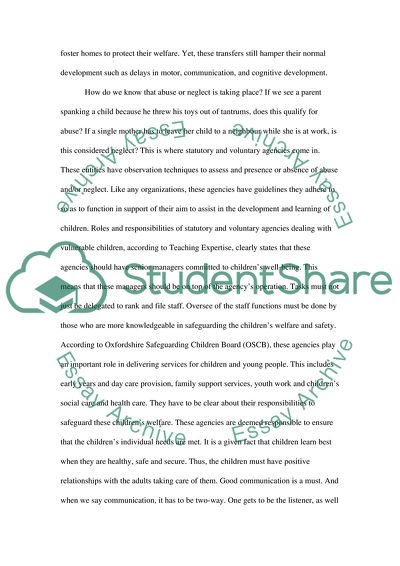Cite this document
(Child Welfare: What Makes a Good Child Care Practice Literature review, n.d.)
Child Welfare: What Makes a Good Child Care Practice Literature review. Retrieved from https://studentshare.org/social-science/1739935-child-protection-is-part-of-a-continuum-of-good-child-care-practice-that-supports-development-and-learning-of-children-in-their-early-years-and-beyond
Child Welfare: What Makes a Good Child Care Practice Literature review. Retrieved from https://studentshare.org/social-science/1739935-child-protection-is-part-of-a-continuum-of-good-child-care-practice-that-supports-development-and-learning-of-children-in-their-early-years-and-beyond
(Child Welfare: What Makes a Good Child Care Practice Literature Review)
Child Welfare: What Makes a Good Child Care Practice Literature Review. https://studentshare.org/social-science/1739935-child-protection-is-part-of-a-continuum-of-good-child-care-practice-that-supports-development-and-learning-of-children-in-their-early-years-and-beyond.
Child Welfare: What Makes a Good Child Care Practice Literature Review. https://studentshare.org/social-science/1739935-child-protection-is-part-of-a-continuum-of-good-child-care-practice-that-supports-development-and-learning-of-children-in-their-early-years-and-beyond.
“Child Welfare: What Makes a Good Child Care Practice Literature Review”. https://studentshare.org/social-science/1739935-child-protection-is-part-of-a-continuum-of-good-child-care-practice-that-supports-development-and-learning-of-children-in-their-early-years-and-beyond.


